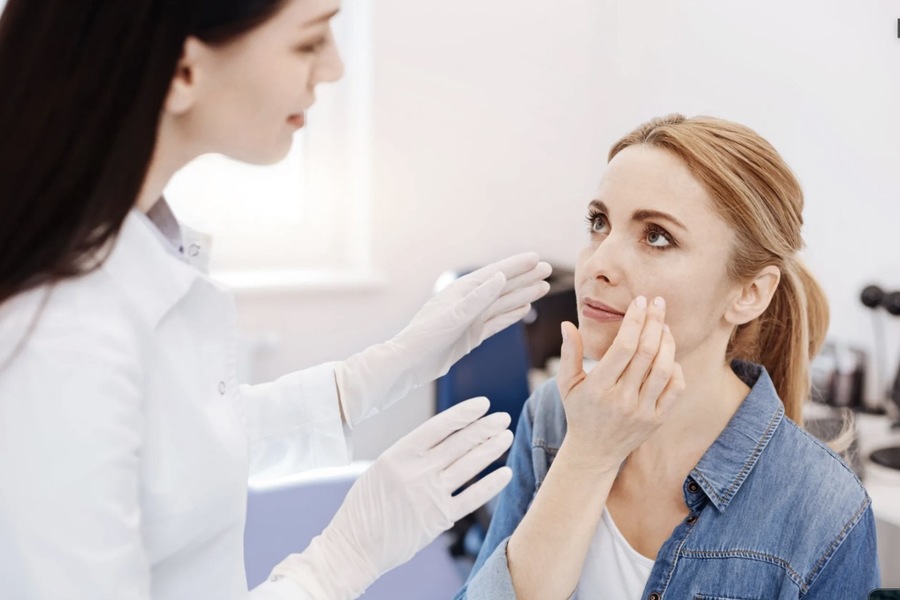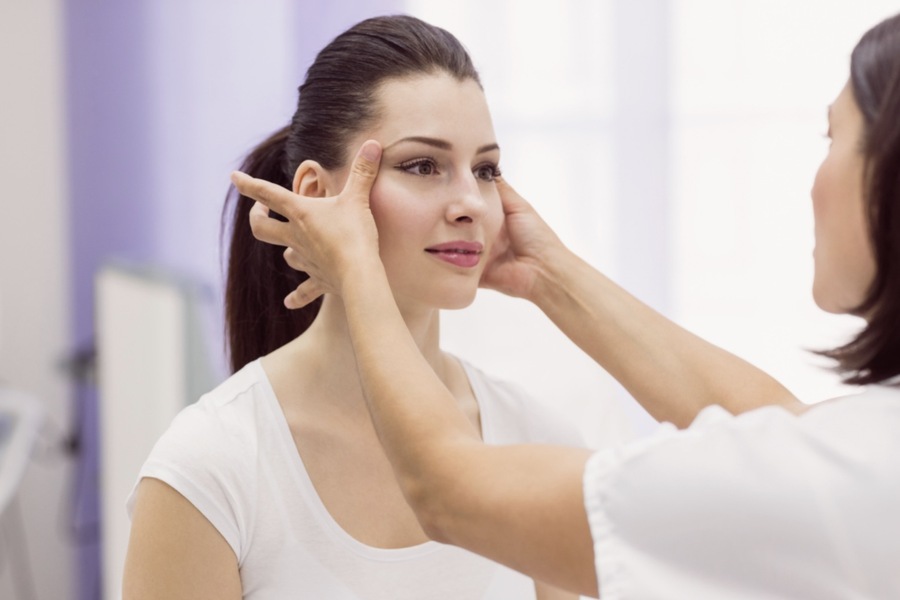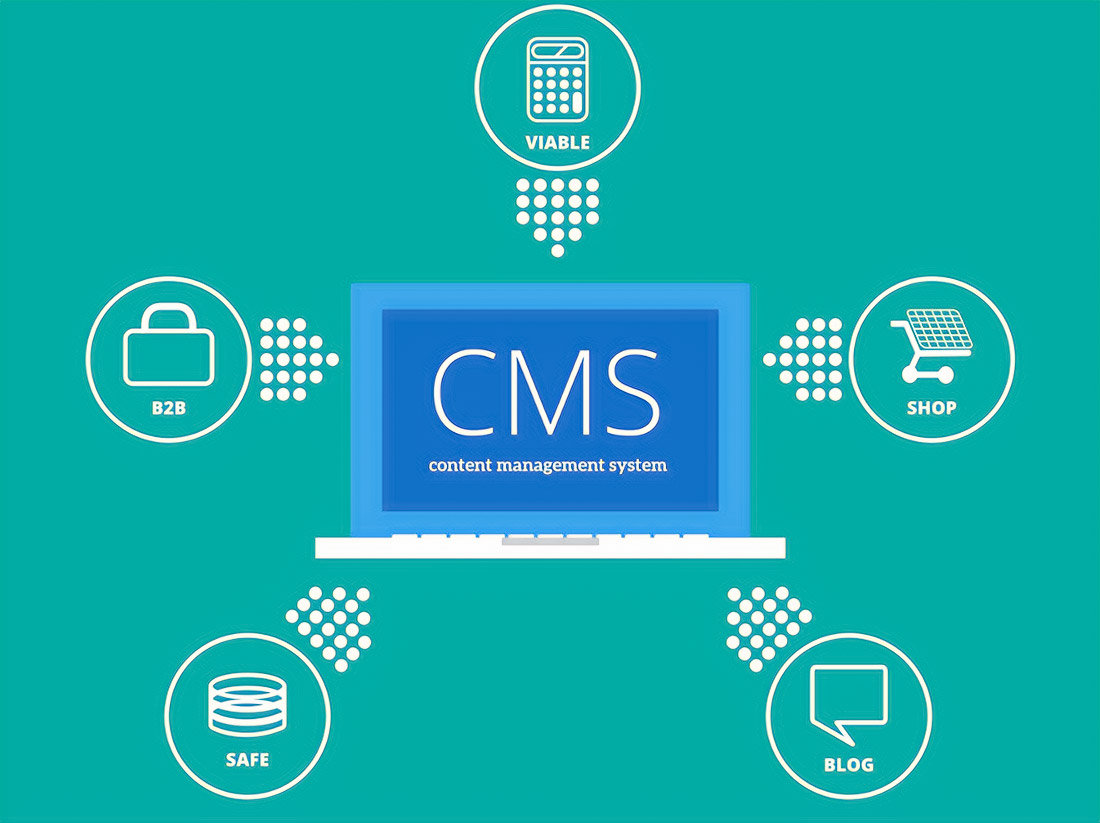Moles are common skin growths that appear as small, dark spots or patches on the skin. Most moles are harmless, but some can indicate underlying health risks, including skin cancer. The ABCDE method provides a standardized way to evaluate moles for potential signs of malignancy, helping individuals understand when a mole may need further examination. Knowing these guidelines can be especially valuable in regions like Dubai and the UAE, where high sun exposure can increase skin cancer risk. This article outlines the ABCDEs of moles, explaining how each criterion can guide you in determining when a dermatology consultation may be necessary.
The Importance of Monitoring Moles for Skin Health
Monitoring moles is essential for early skin cancer detection, particularly melanoma, which can develop in or around an existing mole. According to the World Health Organization, skin cancer cases have increased significantly worldwide, with sun exposure being a primary risk factor. This is especially relevant in Dubai and the UAE, where UV radiation levels are high year-round. Early detection through regular mole checks enables timely intervention, reducing the risk of advanced disease. Understanding the ABCDEs of mole evaluation is a practical tool for individuals to assess their moles accurately, helping them decide when to consult a dermatologist.
The ABCDE Criteria: An Overview
The ABCDE criteria provide a structured approach to identifying unusual features in moles that may warrant further investigation. The acronym stands for Asymmetry, Border, Color, Diameter, and Evolving. By examining moles based on these five characteristics, individuals can gain insight into potential risks associated with specific moles. Dermatologists commonly use the ABCDE guidelines to differentiate benign moles from suspicious ones, making it a reliable method for personal monitoring. Each criterion highlights a particular feature that could indicate abnormal cell growth, helping individuals make informed decisions about when to seek a dermatology consultation.
Asymmetry (A): Understanding the Importance of Shape
Asymmetry refers to an uneven shape in a mole. A normal mole typically has a symmetrical, round, or oval shape, with both halves mirroring each other if divided down the center. In contrast, an asymmetrical mole has two halves that differ in shape or size, indicating irregular growth patterns. Asymmetry is often an early sign of potential malignancy, as cancerous cells tend to grow unevenly. Checking for asymmetry can help identify moles that may require further examination, as symmetry is a key indicator of healthy cell growth in skin tissues.
Border (B): Examining Edges for Irregularity
A mole with smooth, well-defined edges is generally benign. Irregular or jagged borders, however, can signal potential skin abnormalities. When a mole’s edges are blurred, notched, or scalloped, it may suggest that the mole’s cells are growing in an uncontrolled manner. Cancerous moles often have poorly defined borders, which can appear to spread unevenly into surrounding skin. Examining the borders of a mole helps in determining if it requires closer inspection by a dermatologist. In Dubai, where UV exposure is a common factor, monitoring border changes can provide an early warning for seeking professional advice.

Color (C): Recognizing Inconsistencies in Hue
Healthy moles generally have a uniform color, ranging from tan or brown to dark brown, depending on skin tone. Uneven coloration or multiple shades within the same mole may indicate irregular cell activity. Moles with a mix of colors, such as brown, black, red, white, or blue, may have abnormal pigment distribution. This variation can signify abnormal cellular changes. Paying attention to color irregularities is crucial in self-assessment, as multi-colored moles have a higher likelihood of being atypical. Consistent observation of color changes can guide individuals on when to seek further dermatological assessment.
Diameter (D): Understanding the Size Factor
The diameter of a mole can also provide valuable information regarding its potential risk. While benign moles are generally small, those with a diameter larger than 6mm (about the size of a pencil eraser) may require further attention. Larger moles are more likely to contain abnormal cells, making it essential to monitor size changes over time. Regularly checking the diameter of moles is particularly useful in Dubai, where increased sun exposure can elevate skin cancer risk. If a mole continues to grow beyond a 6mm diameter, it’s advisable to consult a dermatologist for a professional evaluation.
Evolving (E): Recognizing Changes Over Time
The “E” in the ABCDE method stands for evolving, referring to any noticeable changes in a mole over time. Moles that grow, change shape, or alter in color may indicate potential skin issues. It’s essential to be aware of new moles appearing or existing moles evolving in size, shape, or texture. An evolving mole that becomes itchy, bleeds, or forms a scab may be of particular concern. Regular self-monitoring enables individuals to detect early signs of skin irregularities. In such cases, consulting a qualified dermatologist ensures timely intervention and reduces the likelihood of progression.
How Often Should You Check Moles?
Regular mole checks are essential for maintaining skin health, particularly in areas with high UV exposure, such as Dubai and the UAE. Health organizations recommend monthly self-examinations to identify any changes in moles promptly. Additionally, scheduling annual dermatology consultations allows for a more thorough assessment by professionals. These check-ups provide a comprehensive overview, ensuring that any new or altered moles are closely monitored. For individuals with a family history of skin cancer, more frequent checks may be advisable. Routine examinations empower individuals to stay proactive in their skin health, increasing the chances of early detection.
When to Seek a Dermatology Consultation
A dermatology consultation is recommended whenever a mole exhibits any of the ABCDE characteristics, especially if changes occur suddenly. Consulting a dermatologist provides a professional assessment that can distinguish between benign and potentially problematic moles. Dermatologists may use tools like dermoscopy to examine moles more closely, offering a clearer view of underlying skin structures. In Dubai, reputable clinics such as ProDerma Clinic provide specialized services in mole assessment and early skin cancer detection. Seeking expert advice at the first sign of irregularity ensures peace of mind and allows for early intervention if necessary.
Preventive Measures for Skin Health in Dubai
Preventive measures play a vital role in maintaining skin health, especially in regions like Dubai with high UV exposure. Applying broad-spectrum sunscreen daily, wearing protective clothing, and avoiding peak sun hours can significantly reduce the risk of sun-induced skin damage. UV rays can trigger mole changes, making sun protection essential. For individuals frequently outdoors, reapplying sunscreen every two hours is advisable. Consistent protection helps prevent new moles from developing and existing ones from becoming problematic. Adopting these preventive habits supports healthier skin and complements regular mole checks for comprehensive skin care.

Technology’s Role in Mole Monitoring and Skin Health
Advancements in technology have enhanced mole monitoring, making it easier to detect changes over time. Digital mole mapping and dermoscopic imaging allow dermatologists to create a visual record of moles, facilitating accurate comparisons during follow-up visits. These tools help in detecting subtle changes that may not be noticeable through visual inspection alone. For individuals in Dubai, where sun exposure poses additional risks, accessing such technology at dermatology clinics can provide reassurance. Digital mole mapping, combined with the ABCDE guidelines, offers a robust method for maintaining skin health and identifying early signs of skin abnormalities.
Practical Tips for Effective Self-Monitoring
Self-monitoring is a valuable tool for early detection, and following a structured approach can improve its effectiveness. Using a mirror to check hard-to-see areas and keeping a record of existing moles can help track changes accurately. Taking photos of moles allows for easy comparison, helping to spot gradual changes that may go unnoticed. Additionally, setting monthly reminders for self-checks can establish a consistent routine. For residents in Dubai, where intense sun exposure is common, these practical steps ensure that any changes in moles are quickly noticed, supporting proactive skin health management.
Conclusion
Understanding the ABCDEs of moles offers a straightforward yet powerful tool for monitoring skin health. By regularly assessing moles for asymmetry, border irregularity, color inconsistency, diameter, and evolution, individuals can recognize potential signs of abnormal growth. This knowledge empowers individuals to make informed decisions about when to seek a dermatology consultation, ensuring early intervention when necessary. For residents of Dubai and the UAE, adopting this proactive approach, combined with preventive measures against UV exposure, supports long-term skin health and contributes to reducing the risk of skin-related issues.

Hiking addict, traveler, band member, Vignelli fan and independent Art Director. Working at the sweet spot between design and mathematics to save the world from bad design. Nothing ventured, nothing gained.



